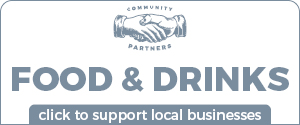Rohse: Brands: Forging a ranch's identity
Cattle ranchers cannot protect livestock from theft or loss as easily as they protect their greenbacks, credit cards and licenses tucked snuggly in billfolds and hip pockets.
But they are fortunate that brands came into use centuries ago to give them a hand.
The Spanish explorer, Hernando Cortes, in 1519 was said to have brought cattle from England and introduced Americans to his Three Christian Cross brand, representing the Holy Trinity. It was reportedly a beautiful brand.
The marking of livestock with fire-heated irons has been used for centuries. Ancient Roman symbols were used as magic designed to protect animals from harm.
The practice of burning a mark on animals with thick hair became necessary as larger areas of Spain were grazed, and in the United States and Northern Mexico, cattle ranchers became more numerous, herds grew larger and often co-mingled while grazing on open range.
The brands enabled cowboys to separate the proper brands when taking them to market.
Brands became mandated, as did inspection of cattle.
When settlers arrived in Oregon Country, the land they claimed was devoid of fences and corrals which would have helped prevent animals from straying. Wild animals took their toll on the livestock
At our ranch in Grant County in the 20th century, brands were a real boon to ranchers.
Not infrequently, we received calls from neighboring ranchers to let us know that one or more of our cattle were with theirs and that they were in the corral at Wall Creek. Ranchers in our area knew nearly everyone’s brand. Some even carried a notebook in their pocket with that information in case they were uncertain.
Similarly, cattle from other ranchers often showed with ours and those neighbors were always glad to get a call that a missing cow had been found.
Brands also were a deterrent to rustlers. They were not common in that era, but appeared from time to time.
At one time, my parents decided to raise pigs as an additional cash crop. That was not a good idea.
Our pigs had a considerable appetite for greener pastures. The phone rang frequently with the message that we should come get our pigs. Our ungrateful pigs seemed quite dissatisfied with the fare we offered. The pigs did not provide us with another cash crop, which would have been welcome during that Great Depression.
The use of brands is interesting and I spent time looking at the Oregon State Brand book that is available for purchase at the Oregon Department of Agriculture. It contains all Oregon’s brands and owners. As I looked at those varied designs, it occurred to me that it would be fun to have one’s own brand and that maybe I should have a cattle ranch someday.
Our brand at the ranch was a rocking chair. I liked that. Before my parents divorced and my mother married Lynn, Lynn had managed his parents’ ranch in Bologna Basin, and their brand was the rocking chair. When Lynn and my mother married and started ranching, Lynn brought along that brand.
It is an old familiar design often seen in pictures of brands. My brother, who has passed away, had that as his brand, and his widow and their children kept it. I wish we knew how long it had been in the family and whether they had originated the idea, but as yet, the information hasn’t surfaced.
At the ranch in Monument, the annual branding event was interesting, but I did take not participate in it. Rather, I was part of the kitchen crew. My mother was responsible for providing hearty meals for all the workers. Although the branding area was several blocks from the ranch house, the odor of burned hair and flesh from the hot branding iron wafted all the way to our kitchen porch.
The branding was an example of how well local ranchers worked together. Several of our neighbors gave us a hand.
During haying, Slim Owings came each day to help Lynn, until our crop was in. Next, Lynn worked at Slim’s ranch until his haying was finished. It made for long seasons for Lynn and Slim, but during the Depression, ranchers could not afford to pay for help. It was a beautiful example of, “I’ll help you. You help me.”
As mentioned, at that time the hot iron brand was used. The freeze brand came later, in which a copper, iron or brass branding iron was “cooled” in liquid nitrogen that destroyed the pigments in the follicles of the animal’s hair. The claim originally was that the freeze brand was less painful and stressful for the stock. But it was later claimed that whereas the hot iron brand was permanent, that was not the case for the freeze brand. Then, too, it was more expensive and slower. And it was important that the worker who was administering the brand was experienced in order to prevent blurred brand images, and keep the animal safe.
Reading a brand is rather tricky, although they are read like a page of a book, from left to right and top to bottom.
No lowercase letters are used, only capitals. Ranchers often use their initials.
Closed letters, such as A, B, and D, should be avoided because they are difficult to read from a distance. You’ll want a brand you can read from your pickup when you see a steer across the gully.
Keep your brand simple, probably a maximum of three numbers, symbols or letters.
One of the advantages of a brand is it enables a rancher to track of his own livestock. It should be registered at the state brand inspection office. If your proposed brand is too similar to to an existing one, it will not be accepted.
As to the language, when a number or letter, such as an “H” is on its side, it’s known as the Lazy H brand. If a symbol is reversed, such as a letter “B,” it is a Reversed B brand. Tumbling refers to a symbol tipped to the right about five degrees. Letters and numbers when connected vertically to each other are “hanging.” The variations are considerable.
In the hide and leather industry, brands are treated as defects and may diminish value depending on the type.
Branding has been used for more than livestock. Branding irons were applied to the rear of tortoise shells in the Galapagos Islands for purposes of identification. But those were replaced by PIT microchips combined with ID numbers painted on their shells.
Sheep are branded with a paint marking that is only semi-permanent.
An additional form of identification for animals is an inner lip or ear tattoo, ear markings, ear tagging or microchip implants.
The hooves of military horses were sometimes branded so casualties on the battlefield could be accurately counted.
In the United States, horse branding is not always required, but there are exceptions, such as captured mustangs made available for adoption by the Bureau of Land Management.
And as to the primary question: Does it hurt? Yes, it does.
Branding with a hot iron has raised welfare concerns about pain and suffering. It can also cause infections in some cases. According to one source, the practice has been banned in Europe. Could that eventually extend to North America?
What can a cattle rancher do to protect this asset that cannot be secreted in a billfold or safe deposit box?
Perhaps his greatest assurance is human ingenuity.
Elaine Rohse can be reached at rohse5257@comcast.net.









Comments